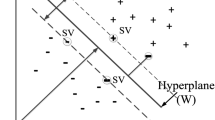Abstract
Vibration response is a particularly important signal to characterize the system state. This paper analyzes the reason of fault generated high speed machine, vibration response mechanism and its frequency characteristic. According to the measured vibration signals, done time and frequency domain features analysis, wavelet packet analysis and frequency domain energy analysis, put forward a kind of fault comprehensive diagnosis method with accurate and rapid identification characteristics, can adapt to the complex vibration response signal with interference and low signal to noise ratio.
Access this chapter
Tax calculation will be finalised at checkout
Purchases are for personal use only
Preview
Unable to display preview. Download preview PDF.
Similar content being viewed by others
References
Maolin, W., Guopng, Z., Guangwei, C.: Analysis of Innovatory Thought for Structure Design of GA35 Automatic Gun. Journal of Gun Launch & Control (3), 28–31 (2005)
Bin, Y., Zhong, Y., Rui, W.: Movement Characteristics Analysis of Rotary Chamber Mechanism of a Gun Automatic Mechanism. Journal of Gun Launch & Control (2), 66–69 (2010)
Jinsong, D.: The Modeling & Analysis of the Auto-cannon collision Using Bond-spaces. Journal of Gun Launch & Control (2), 1–4 (2001)
Hongxia, P., Jinying, H.: Testing Load Spectrum on Power Train of Armored Vehicle. Journal of Vibration, Measurement & Diagnosis 29(1), 105–109 (2009)
Jinsong, D., Wenzhong, W.: Dynamic Simulation of Exterior Power Auto-cannon. Journal of Nanjing University of Science and Technology 25(3), 234–237 (2001)
Jinpei, W., Jianhua, X.: Intelligent Fault Diagnosis and Expert System. Science Press, Beijing (1997)
Heji, Y., Guanglin, H.: Fault Diagnosis Expert System. Metallurgical Industry Press, Beijing (1991)
Son, D., Lim, S.J., Kim, C.: Non-contact Torque Sensor Using the Difference of Maximum Induction of Amorphous Cores. IEEE Trans. on Magn. MAG-28(5), 2205–2211 (1992)
Author information
Authors and Affiliations
Editor information
Editors and Affiliations
Rights and permissions
Copyright information
© 2012 Springer-Verlag Berlin Heidelberg
About this paper
Cite this paper
Pan, H., Pan, M., Zhao, R., Ren, H. (2012). Fault Diagnosis of a High-Speed Automaton Based on Structure Vibration Response Analysis. In: Huang, T., Zeng, Z., Li, C., Leung, C.S. (eds) Neural Information Processing. ICONIP 2012. Lecture Notes in Computer Science, vol 7663. Springer, Berlin, Heidelberg. https://doi.org/10.1007/978-3-642-34475-6_68
Download citation
DOI: https://doi.org/10.1007/978-3-642-34475-6_68
Publisher Name: Springer, Berlin, Heidelberg
Print ISBN: 978-3-642-34474-9
Online ISBN: 978-3-642-34475-6
eBook Packages: Computer ScienceComputer Science (R0)




